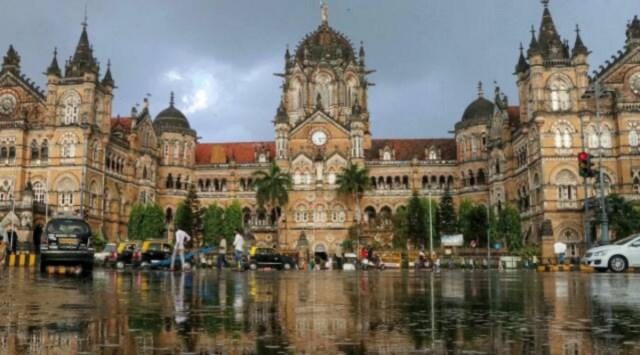Railways begins project to collect data on evolution of stations
As the Modi government spends thousands of crores of rupees to redevelop 1,275 railway stations under the Amrit Bharat Station scheme, the policymakers have decided to trace the origins, importance, and evolution of railway stations as part of the history of the cities, towns, and villages they serve.
 Chhatrapati Shivaji Maharaj Terminus in Mumbai (PTI, file)
Chhatrapati Shivaji Maharaj Terminus in Mumbai (PTI, file) A novel ‘history project’ has begun for the over 7,000 railway stations across India to find answers to this question.
As the Modi government spends thousands of crores of rupees to redevelop 1,275 railway stations under the Amrit Bharat Station scheme, the policymakers have decided to trace the origins, importance, and evolution of railway stations as part of the history of the cities, towns, and villages they serve.
The railway ministry has sent out a directive to all 17 zonal railways to start probing their own records and collect data on the historical importance of the stations.
“Railway stations play a very important role in the life of the city they serve. It has therefore been decided to study the development of stations and the role they play in the development of the surrounding areas,” says the letter to railway zones.
One of the key points the project seeks to probe is whether the original station building was ever replaced with a new one in the past and when, and what was the story behind it.
Unique statues, plaques, historical anecdotes associated with the stations, etc are to be meticulously collected, verified, and sent to the ministry, the directive says.
The zonal headquarters will set up a committee to quickly collect the information from necessary sources including station masters.
“To maintain integrity and authenticity of the information, the committee shall cross check the information with available archives, foundation plaques, commercial circulars, opening documents, details of the nearby bridges and any other sources of information before sending to Railway Board with the approval of the General Manager,” the directive says.
Beyond the obviously well-known historical station buildings, like the Chhatrapati Shivaji Maharaj terminus in Mumbai, the Thane station where the first train arrived, the Howrah station, Lucknow’s Charbag or several smaller stations in Bihar, Uttar Pradesh, and elsewhere associated with Mahatma Gandhi’s movements during the freedom struggle, the history and evolution of thousands of smaller stations are not recorded in the institutional repository of the railways, officials said.
As the Amrit Bharat Station scheme redevelops the stations with modern amenities and rolls out phase-wise, the need was felt to create the “Big Data” set of the history of stations and integrate that into the ongoing redevelopment scheme of things, officials said.
Some of the divisions are also planning to seek public opinion so that local experts reach out to offer historical facts that may not be frozen in the archives.
In the first phase of the Amrit Bharat Station plan, stations have been picked from 32 states and Union Territories. Uttar Pradesh has 149 stations, Andhra Pradesh has 72 stations, Maharashtra has 123 stations, Karnataka has 55 stations, West Bengal has 94 stations, and so on. A station each from the northeastern states of Manipur, Meghalaya, Mizoram, Nagaland, and Sikkim have also been included.
Apart from the scheme, the Cabinet has also approved the redevelopment of New Delhi, Ahmedabad, and Chhatrapati Shivaji Maharaj Terminus (Mumbai) stations for Rs 10,000 crore.







